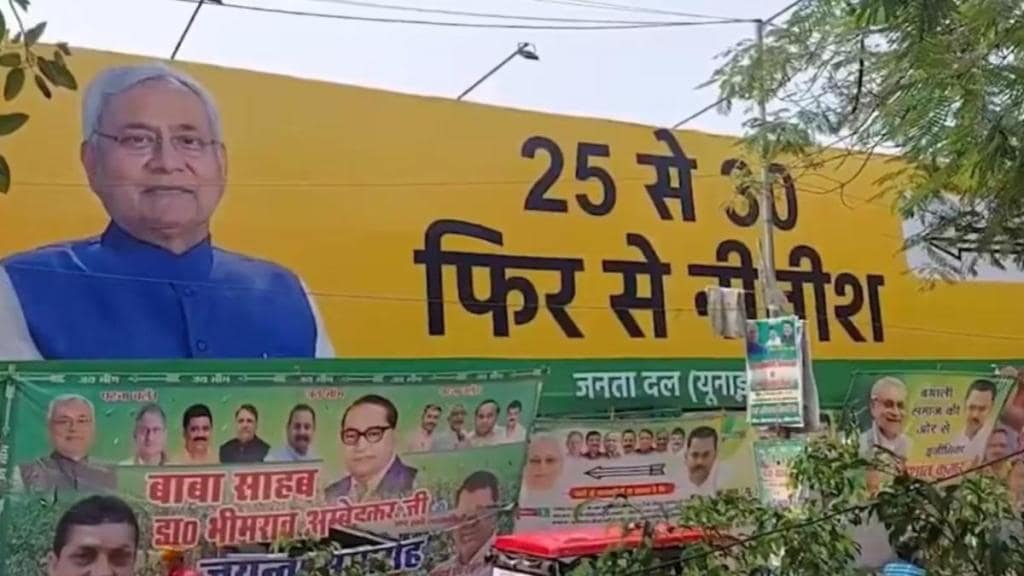Bihar Election 2025: Ideological consistency has never been Nitish Kumar’s calling card — survival has. In a career spanning over three decades, Kumar has turned coalition shifts into a political art form, realigning his loyalties as deftly as others might shift cabinet portfolios. Once celebrated as “Sushasan Babu” — the man who promised clean governance and restored order to Bihar — he is now equally remembered for his political pirouettes. From 1994 to 2025, Nitish Kumar has rewritten coalition logic in Bihar.
Kumar’s alliance acrobatics are not just a Bihar story. His moves have repeatedly disrupted opposition strategies, unsettled BJP-Congress equations and forced parties to redraw the arithmetic of anti-BJP coalitions.
With Bihar Election 2025 almost a month away, let’s take a look at Chief Minister Nitish Kumar’s politics, his U-turn timeline and is he still relevant in the state.
Timeline of Nitish Kumar’s U-turns
Over the past decade, Nitish Kumar’s political journey has mirrored the volatility of Indian coalition politics. Once a ‘Sushasan Babu’, Kumar was also seen by many as ‘Paltu Ram’ for making several political U-turns.
Nitish Kumar’s political journey began amid the turbulence of the JP movement in the 1970s. Young Kumar joined forces with a young Lalu Prasad Yadav. Their partnership soon shaped Bihar’s political destiny. Lalu rose to power in 1990 with Kumar’s strategic backing. But by 1994, cracks began to appear in the dynamics of two ambitious politicians. Uneasy with Lalu’s tightening grip over the Janata Dal, Kumar broke ranks and with George Fernandes, launched the Samata Party.
The turn of the millennium saw Kumar join hands with the BJP and briefly became the chief minister in 2000 for just seven days. Five years later, he returned with a vengeance, leading a stable NDA government in 2005 and again in 2010.
By then, Nitish Kumar had rebranded himself as Bihar’s face of good governance; he was credited with restoring law and order, improving infrastructure and championing welfare for the marginalised, especially Mahadalits and EBCs.
His first major break came in 2013, when he ended his alliance with the BJP after Narendra Modi was named the NDA’s prime ministerial candidate. Claiming India needed a leader with a “clean and secular image”, Nitish walked out. Kumar declared he would “turn to dust” before returning to the BJP.
In 2015, he forged the Mahagathbandhan with long-time rival Lalu Prasad Yadav’s Rashtriya Janata Dal (RJD) and the Congress. The coalition swept the Bihar Assembly polls with 178 of 243 seats. Their combined effort resulted in a resounding victory over the BJP, with Nitish Kumar becoming Chief Minister and Lalu’s son, Tejashwi Yadav, taking the post of Deputy Chief Minister. However, passive-aggressive statements and public disagreements marked much of their partnership. It kept the alliance fragile but intact through the 2015 elections.
Come 2017, the alliance crumbled amid corruption allegations against Deputy CM Tejashwi Yadav. Kumar demanded Tejashwi’s resignation to salvage his clean image, but Lalu and Tejashwi refused to comply. According to reports, multiple attempts were made by the Congress leadership to resolve the issue but Lalu remained adamant.
When Tejashwi’s resignation didn’t come, Nitish Kumar abruptly quit the alliance and rejoined the BJP. Kumar helped the NDA win 39 of 40 Lok Sabha seats in 2019.
In 2022, alleging “interference and humiliation” by the BJP, Nitish flipped again. He resigned as CM only to return within hours at the helm of a revived Mahagathbandhan with Tejashwi as deputy and the Congress and Left parties as allies.
By 2024, he emerged as a key architect of the INDIA opposition bloc, hoping to shape national politics. However, frustrated by infighting and his fading prime ministerial prospects, he distanced himself once more.
Is Nitish Kumar still relevant in Bihar politics?
Despite his diminishing charisma, Nitish Kumar remains a force that neither ally nor rival can ignore. His Janata Dal (United) continues to command a crucial caste base — particularly among Kurmis and Koeris (Kushwaha) — giving him leverage in Bihar’s intricate caste matrix. Kumar has a hold over the Luv-Kush votes (Kushwaha communities are called Luv-Kush in Bihar). But the aura of inevitability that once surrounded him has certainly faded.
A latest C-Voter survey placed him third in popularity (16%) among chief ministerial choices, behind RJD’s Tejashwi Yadav and Jan Suraaj founder Prashant Kishor. His approval ratings have fluctuated all year: 18% in February, dipping to 14% by August and inching back to 16% in September. Political commentators see this as a sign of voter fatigue and the growing appeal of younger challengers.
Kumar’s critics, including his one-time political aide Prashant Kishor, earlier described him as a once undeniably popular leader who has become a spent force. But even detractors admit that his survival instincts remain unmatched. Few politicians in India have navigated such ideological whiplash with comparable finesse or audacity.
What explains Nitish Kumar’s longevity?
For one, he has been remarkably adept at sensing political winds before others feel the breeze. Each time he switches sides, he frames it as a moral stand — against corruption, communalism or arrogance of power. But each pivot has also reinforced his image as a leader guided less by ideology and more by calculation. His strong voter base of Extremely Backward Class (EBC) is also one of the reasons behind his longevity.
The Lokniti-CSDS post-poll survey of 2020 showed that nearly three-fifths (about 60%) of EBC voters backed Nitish Kumar/NDA.
His governance record — roads, electricity and law-and-order reforms in the early 2000s — remains the bedrock of his Sushasan image. Yet, two decades later, Bihar’s youth are restless, unemployment remains high and Nitish’s political brand feels worn.
Still, in a state where coalition arithmetic often trumps ideological purity, Nitish Kumar’s adaptability continues to be his greatest asset. The polls in the state will be held in two phases on November 6 and 11. The results will be announced on November 14.


